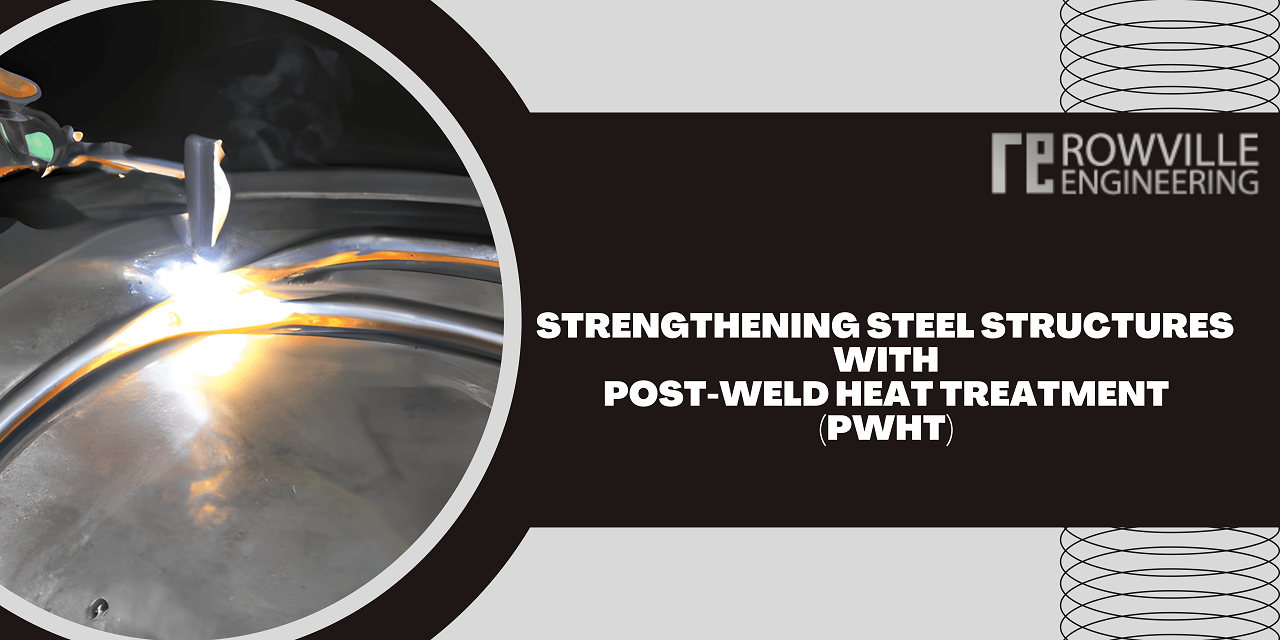Strengthening Steel Structures with Post-Weld Heat Treatment (PWHT)
In the realm of steel structures, ensuring safety, longevity, and integrity is paramount. The welding process is a fundamental step in constructing steel structures, but it introduces a unique set of challenges, including residual stresses, distortion, and alterations in material properties. To overcome these challenges, engineers and fabricators turn to Post-Weld Heat Treatment (PWHT). In this blog, we will explore the role of PWHT in steel structures, its importance, and its various applications.
Published On:24-10-2023

Understanding PWHT in Steel Structures
Post-Weld Heat Treatment (PWHT) is a controlled thermal process applied to steel structures after welding. This process involves heating the welded components to a specific temperature and holding them at that temperature for a predetermined time, followed by controlled cooling. PWHT helps alleviate several issues that can arise in steel structures due to the welding process:
- 1. Residual Stress Reduction: The high temperatures and rapid cooling during welding create residual stresses in the steel. These stresses can lead to deformation and cracking. PWHT reduces these stresses, making the structure more stable and less prone to failure.
- 2. Microstructure Improvement: Welding can alter the microstructure of the base steel, which may affect its mechanical properties. PWHT allows for the controlled refinement of the microstructure, improving the steel's strength and toughness.
- 3. Hydrogen Removal: During welding, hydrogen can be introduced into the steel, which can lead to hydrogen-induced cracking. PWHT removes this hydrogen, reducing the risk of cracking and ensuring the structural integrity of the steel.
Applications of PWHT in Steel Structures
- 1. Pressure Vessels: In industries like petrochemical, nuclear, and oil and gas, pressure vessels are critical components. These vessels are often subjected to high pressure and temperature conditions. PWHT is used to ensure the vessels' reliability and safety by reducing residual stresses and improving material properties.
- 2. Pipelines: Steel pipelines used for transporting oil, gas, and other fluids often undergo PWHT. It enhances the toughness and corrosion resistance of the pipeline, ensuring its ability to withstand the rigors of transportation and environmental conditions.
- 3. Bridges and Infrastructure: Steel is commonly used in the construction of bridges, buildings, and other infrastructure. PWHT plays a crucial role in reducing distortion and ensuring that these structures remain structurally sound for many years.
- 4. Offshore Structures: Offshore platforms and drilling rigs are exposed to harsh environmental conditions, including high winds, corrosive saltwater, and heavy loads. PWHT is employed to enhance the steel's durability and resistance to these extreme conditions.
The PWHT Process for Steel Structures
The PWHT process for steel structures involves the following steps:
- 1. Preheating: The structure is slowly heated to a specific temperature, typically below the critical transformation temperature. This preheating step minimizes the risk of thermal shock during the subsequent heating phase.
- 2. Soaking:The structure is held at the target temperature for a defined period, allowing stress relief, microstructure refinement, and hydrogen removal to occur.
- 3. Controlled Cooling: After the soaking period, the structure is cooled down gradually to room temperature. This controlled cooling is essential to prevent the formation of new residual stresses.
- 4. Inspection: Following PWHT, the steel structure is rigorously inspected using non-destructive testing methods to ensure the quality of the weld and the overall integrity of the structure.
Conclusion
Post-weld heat Treatment is an indispensable process in the construction and maintenance of steel structures. Its ability to alleviate residual stresses, improve material properties, and enhance the overall integrity of the welded components is instrumental in ensuring the reliability and longevity of steel structures. Whether it's for pressure vessels, pipelines, bridges, or offshore platforms, PWHT stands as a key step in fortifying steel structures against the challenges they face, making them safer and more durable for years to come.